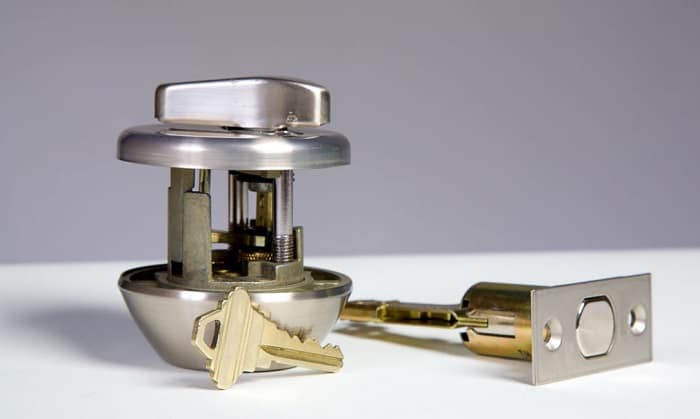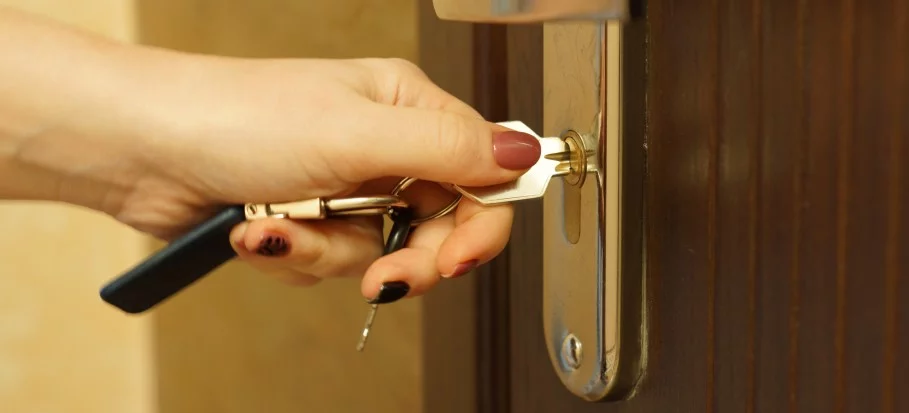Door locks play a crucial role in our daily lives, offering safety and peace of mind by securing our homes and workplaces. They work through a fascinating blend of mechanical and, in some cases, electronic components. When you insert a key or input a code, these components engage, locking or unlocking the door. This simple action keeps our spaces private and protects against unauthorized entry. Understanding how door locks work not only helps us appreciate their importance but also guides us in choosing the right locks for our needs, ensuring our safety in an ever-changing world.
What is the definition of a door lock?
A door lock is a device that secures a door, keeping it closed and restricting access. It usually consists of a latch or bolt that fits into a slot or recess in the door frame. You operate it with a key, a code, or a fingerprint, depending on the lock type. Locks come in many forms, like deadbolts, padlocks, and smart locks. They offer security and privacy by preventing unauthorized entry. Installing a lock is simple in most cases, ensuring safety for homes, offices, and other spaces.

How does a door lock work?
A door lock is a fascinating piece of technology, simple yet effective in keeping our spaces secure. It works through a combination of mechanical and sometimes electronic components, depending on the lock type. Let’s break down the process to understand how it keeps a door secured.
Firstly, at the heart of most locks is the locking mechanism, often a bolt or latch. When you turn a key or a knob, this mechanism moves. It slides into a space in the door frame, known as the strike plate, locking the door in place. This action prevents the door from opening without the correct key or combination.
In traditional key-operated locks, the key plays a crucial role. It has a unique shape that matches the internal configuration of the lock. Inside the lock, there are several small pins or tumblers. The key lifts these to a specific height, aligning them perfectly. This alignment is crucial. It allows the cylinder, where the key goes, to turn and move the bolt or latch, locking or unlocking the door.
The benefits of door lock
Door locks are essential in ensuring safety and security. They offer numerous benefits, making them indispensable in our daily lives.
Security
The primary benefit of a door lock is security. It acts as a barrier, preventing unauthorized entry into homes, offices, and other private spaces. This security is vital for protecting both people and property.
Privacy
Door locks also provide privacy. In both residential and commercial settings, they allow people to control access to their spaces, ensuring that they can work or relax without unwelcome disturbances.
Peace of Mind
Knowing that your space is secure with a reliable lock offers peace of mind. Whether you’re inside or away, you can rest assured that your property is protected against intruders.
Safety for Children
For families with young children, door locks can prevent kids from wandering into dangerous areas or leaving the house unattended.
Control Over Access
Modern locks, especially smart locks, give you control over who has access to your space and when. You can assign temporary codes to guests or service personnel without compromising your overall security.
Deterrence of Crime
The presence of a strong lock can deter potential burglars. It signals that breaking in would be challenging, often leading them to abandon their attempt.
Value Addition to Property
Well-installed, high-quality locks can add value to your property. They are a selling point, especially for buyers who prioritize security.
Convenience
With advancements in technology, locks have become more convenient. Features like keyless entry, remote access, and integration with smart home systems have made managing security easier and more efficient.
Insurance Benefits
Many insurance companies offer lower premiums for properties with good security systems, including sturdy locks. This can lead to savings in the long term.
Emergency Situations
In emergencies, locks can also be lifesavers. They can prevent an intruder from gaining entry, giving you time to call for help or find a safe exit.

Understanding Door Lock Parts & Hardware
Understanding the various parts and hardware of a door lock is essential for maintaining home security and handling repairs. Let’s break down these components in a simple, detailed manner.
Lock Cylinder
This is the core of the lock where you insert the key. It contains pins or wafers that align with the key’s unique shape, allowing the lock to open or close. The lock cylinder activates the bolt or latch when you turn the key.
Bolt or Latch
This is the part that extends into the door frame, securing the door. A latch is typically spring-loaded and retracts when you turn the knob or handle. A bolt, used in deadbolts, is thicker and moves only when you turn the key or thumb.
Strike Plate
Attached to the door frame, the strike plate is where the bolt or latch rests when the door is locked. It helps reinforce the frame and makes the door more resistant to forced entry.
Key
The key is the tool you use to operate the lock. It has a unique set of cuts that match the pins or wafers in the lock cylinder, allowing it to unlock or lock the door.
Knob or Handle
Attached to the door, the knob or handle lets you open the door once it’s unlocked. In some locks, turning the knob or handle also retracts the latch.
Thumb Turn
Found in deadbolts, the thumb turn is a small knob inside that lets you lock or unlock the door without a key. It’s a convenient feature for quick locking from the inside.
Deadbolt
An extra locking mechanism, the deadbolt provides added security. It’s a thick bolt that you operate with a key or thumb turn, extending deeper into the door frame.
Electronic Components (in Smart Locks)
In smart locks, you’ll find keypads, fingerprint scanners, or wireless technology. These components allow for keyless entry and can often connect to smart home systems for remote operation.
Trim
This is the decorative element around the knob, handle, or lock. It not only adds aesthetic value but also protects the lock mechanism from damage.
Rosette
This is the plate around the knob or lever. In addition to providing a clean finish, it helps secure the knob or lever to the door.
Screws and Mounting Hardware
These parts are essential for attaching the lock securely to the door and frame. They need to be sturdy to ensure the lock functions properly and resists tampering.
Spindle
This is the rod that connects the knob or lever to the locking mechanism. When you turn the knob or lever, the spindle rotates and operates the latch or bolt.
Understanding these components can help you maintain, troubleshoot, and even upgrade your door locks. It’s a great way to ensure your home remains secure and to appreciate the engineering behind everyday security features. Each part, no matter how small, plays a crucial role in the overall functionality and reliability of a door lock.
